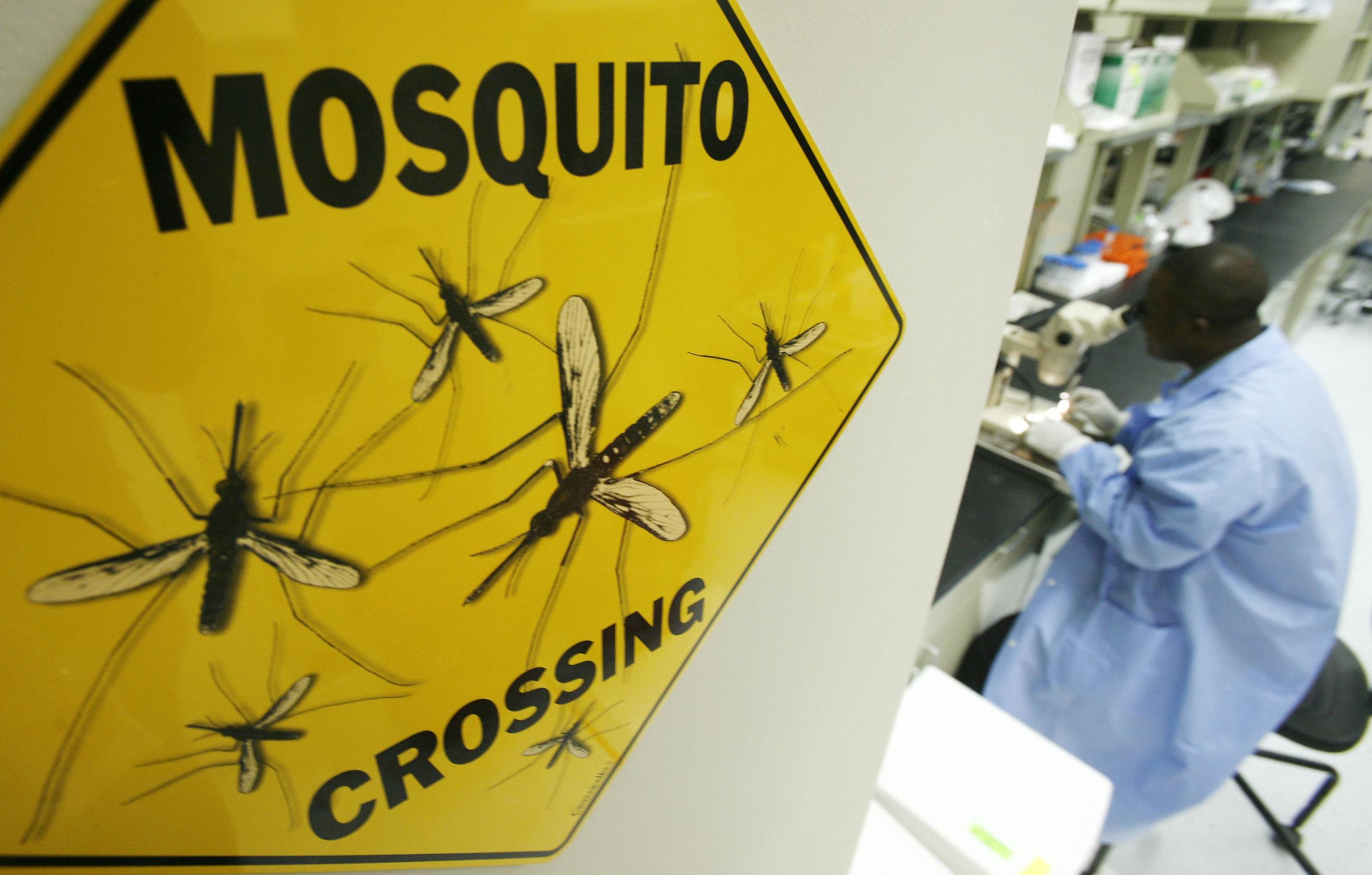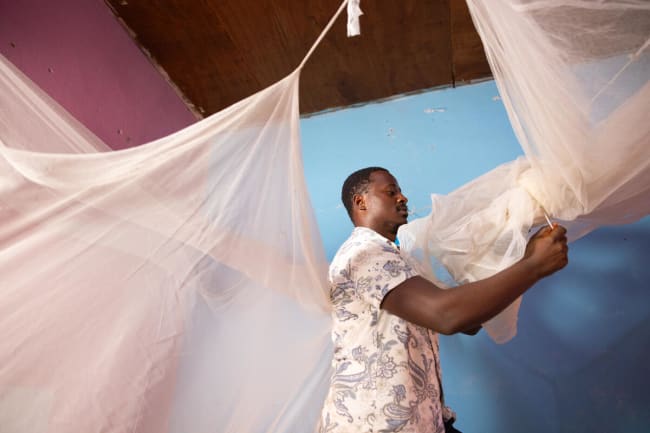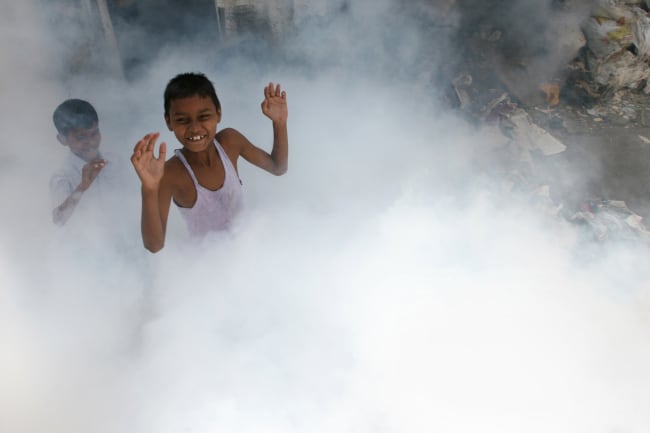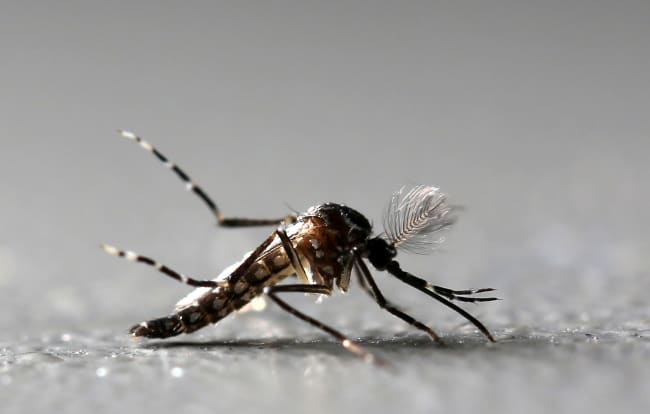Each year, approximately 2,000 travel-related cases of malaria occur in the United States. Last summer and fall, however, something unusual occurred: locally transmitted infections.
The cases, which occurred between May and October in Arkansas, Florida, Maryland, and Texas, marked the first time the disease has been transmitted in the United States since 2003. Public health experts are standing by to see whether this was an anomaly, or whether the United States will experience a similar uptick in locally transmitted cases again this year.
To better understand the public health threat malaria poses, Think Global Health reached out to Susan Madison-Antenucci, the director of parasitology at the New York State Department of Health and an assistant professor in the School of Public Health at the University of Albany, and to Saskia Popescu, an infectious disease epidemiologist at the University of Maryland who focuses on global health security, infection prevention, and bio-preparedness.
Madison-Antenucci and Popescu explain the paths public health departments would travel during a local outbreak of malaria, and say that it would take a series of significant public health failures for the disease to become endemic again.
□ □ □ □ □ □ □ □ □ □ □ □ □ □ □
Think Global Health: We saw a relative surge of malaria cases last year in the United States. Before we get into that, though, what is the history of malaria occurrence here?
Madison-Antenucci: Malaria used to be endemic in the United States. It occurred mostly in the southern states but also came as far north as Cleveland and New York City. In fact, the roots of the Centers for Disease Control and Prevention (CDC) in 1946 started in the effort to control malaria—by controlling water sources where mosquitoes breed and using a lot of DDT to get rid of mosquitoes. Those efforts were successful, and we've been malaria free since the 1950s.
Think Global Health: What's happened since then?
Madison-Antenucci: Last year, a handful of malaria cases in the United States were locally transmitted. That was the first time in 20 years since transmission had been local. In 2023, there were seven cases in Florida, one in Texas, one in Maryland, and one in Arkansas.
Think Global Health: How did scientists figure out that the cases last year were actually transmitted locally?
Popescu: When you get diagnosed with malaria at the hospital, the infection preventionist there reports it to the local health department, which steps in and does a really thorough investigation of the patient.
Madison-Antenucci: The health department conducts an epidemiological investigation. Epidemiologists ask questions such as "Did the person travel? Where did they travel? Did they take antimalarials, and if so, which one? Have they ever had malaria before? Did they have any recent blood transfusions or blood products? Were they recently hospitalized?"
If the epidemiologists rule out everything else, then they ask, "Were there any other recent cases of malaria that could have caused a mosquito-vectored local transmission?" If somebody travels to an endemic area and gets malaria, and then comes back to the United States and is bitten by a mosquito that picks up the malarial parasite, that mosquito could transmit malaria locally.
Malaria Cases in the United States, 2001–21
Spurred by international travel and migration, U.S. malaria cases have increased overall since 2001
Think Global Health: What happens if the epidemiologists determine that local transmission has occurred?
Popescu: If we find a case of local transmission, that will initiate more targeted mosquito surveillance and control. A lot of cities around the United States already conduct mosquito surveillance, which involves tracking, capturing, and testing mosquitoes to see whether they're positive for various diseases such as dengue or West Nile. It's usually a joint program between the health department and the environmental services department. The city will also do more spraying for mosquitoes for vector control.
The health department might also start testing people in the area for malaria and providing information to residents about prevention—think wearing mosquito repellant, wearing proper attire, being indoors, and getting rid of standing water.
Antimalarial drugs could also be given to people as prophylactics, but that really only happens in areas of moderate to high disease burden. I can't give you a specific number for what that would be in the United States.
Think Global Health: What happens to the patients in locally transmitted malaria cases?
Madison-Antenucci: For people who do contract malaria, we have very effective drugs and we have a choice of drugs. If a person is resistant to one, we can give others.
We also have a next-generation sequencing assay we can use to test for drug resistance mutations in the Plasmodium parasite that causes malaria. If treatment fails in someone, we can identify what drug resistance mutations they might have to inform how best to treat them.
Popescu: Care is also taken to make sure they are not bitten by more mosquitoes, helping spread malaria.
Think Global Health: Realistically speaking, do you foresee any possibility of a scenario where local transmission of malaria in the United States wouldn't be just a one-off or small cluster of cases like we saw last summer? Could malaria ever become endemic here again?
Madison-Antenucci: It's very unlikely, because malaria doesn't transmit person to person. It first requires a person traveling to a malaria endemic area and getting malaria. Then the infected person has to travel back to the United States and be bitten by a mosquito.
After that, it takes a week for the parasite to develop in the mosquito, and not all female mosquitoes take a second blood meal from somebody else in order to lay their eggs. A lot of things have to happen for malaria to be transmitted locally.
Malaria Present Throughout United States in 2021
New York, Maryland, and Texas reported the greatest number of malaria cases
Popescu: I'm an infectious disease person, so I'm never going to say that something is impossible. But do I see it as likely? No. States that do experience mosquito-borne diseases and are at risk for things such as West Nile have gotten really good at rapid identification, reporting, and response. It's become a really nice joint effort between health care, public health, and environmental departments, and great relationships with universities are numerous as well.
Could we see blips and clusters? Yes. But I think it would take a lot for it to become more endemic in the United States.
Think Global Health: All that said, can you use your imagination and absolute-worst-case-scenario it for me?
Popescu: To me, the worst-case scenario is that malaria does become endemic again in the United States, because for some reason we're unable to control it or respond to it in the way we've been able to until now. You can imagine scenarios where people coming from northern states now have to worry and take antimalarials when they travel to southern states, for example. Something crazy like that where we totally lose control of it.
Another concern—and I say this coming out of COVID—would be that mistrust in public health and in science could affect our capacity to deal with a novel situation where suddenly we had these large-scale outbreaks of malaria, especially if we were relying on people to follow directions.
That was a mistake we made in the lead-up to COVID—thinking that everyone was going to be on the same page about the response.













